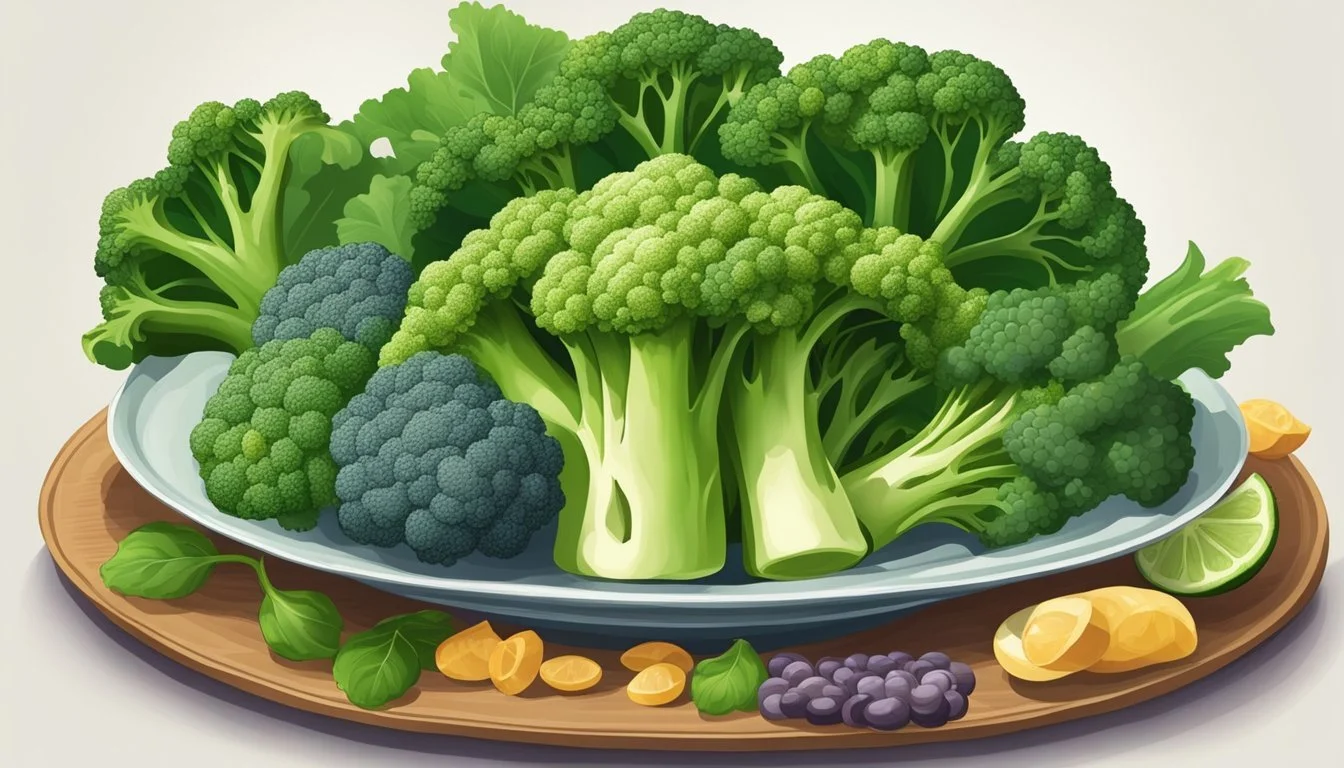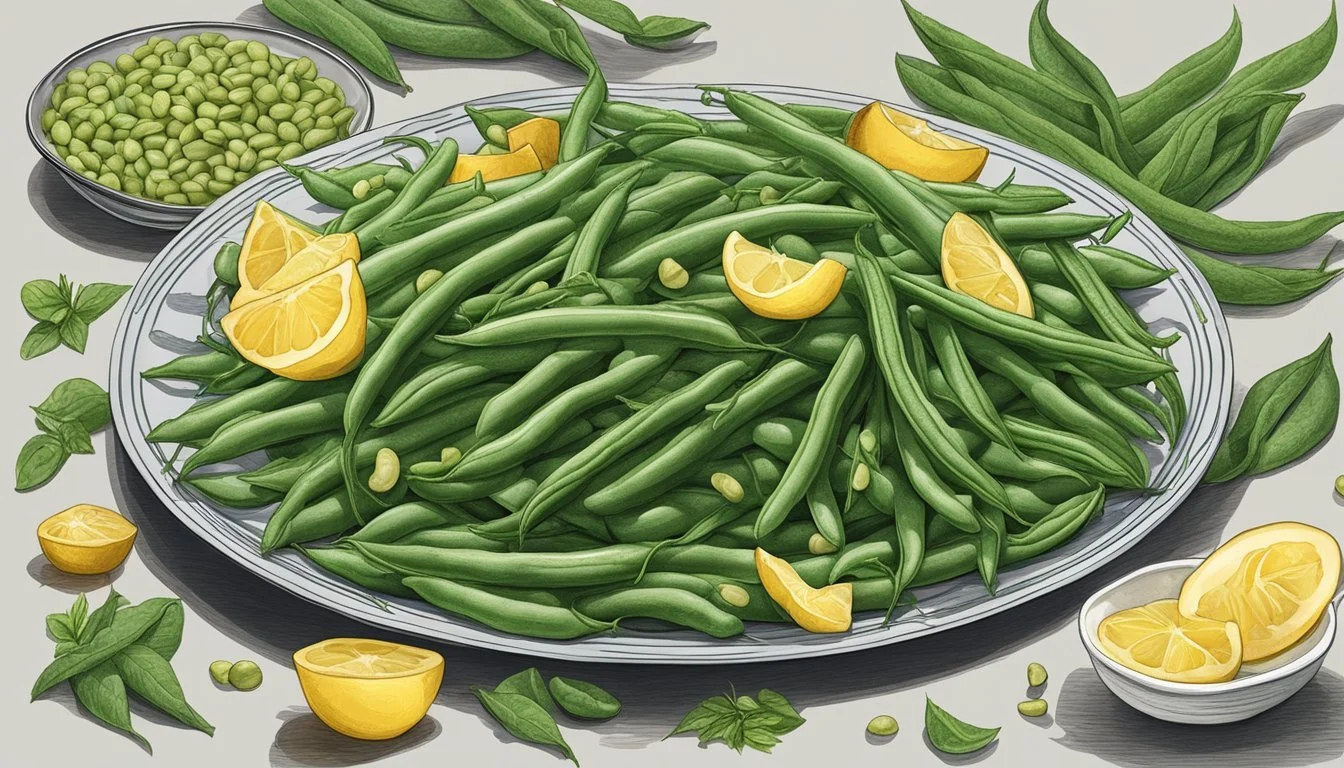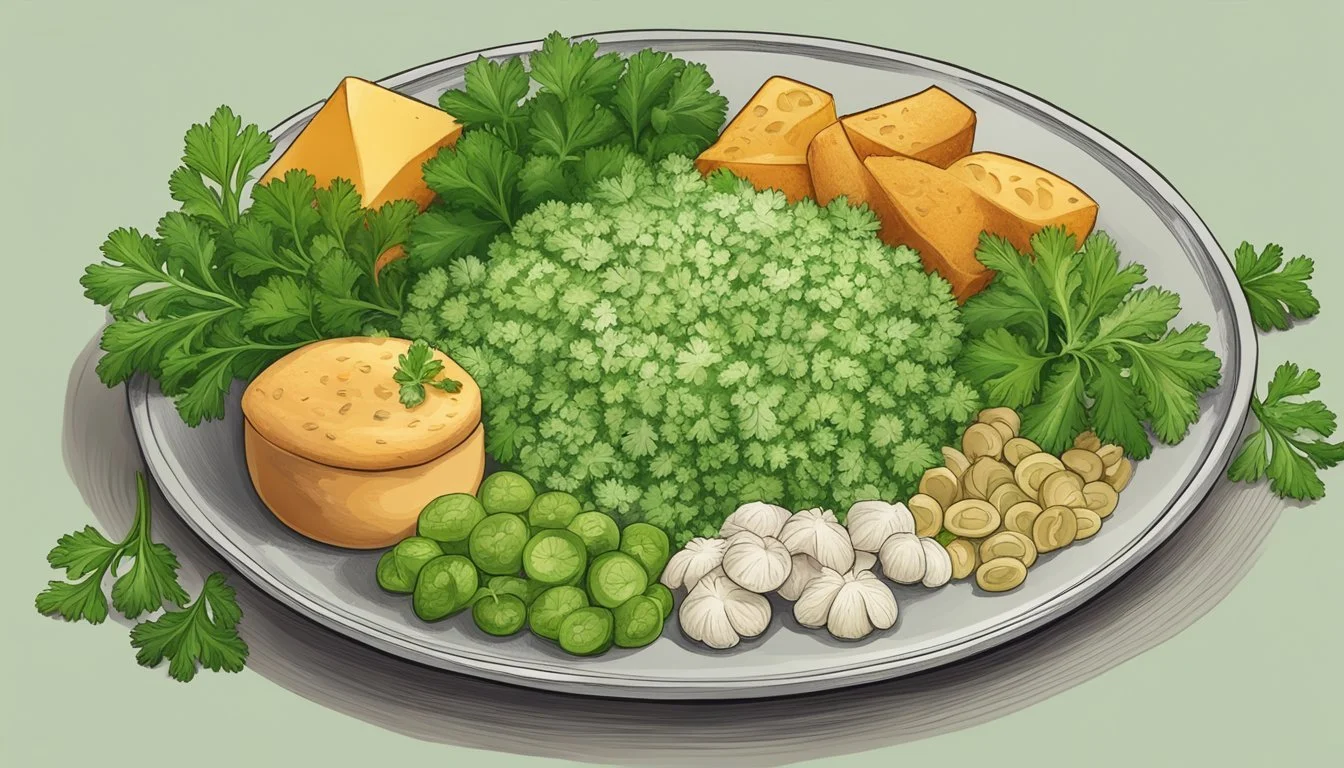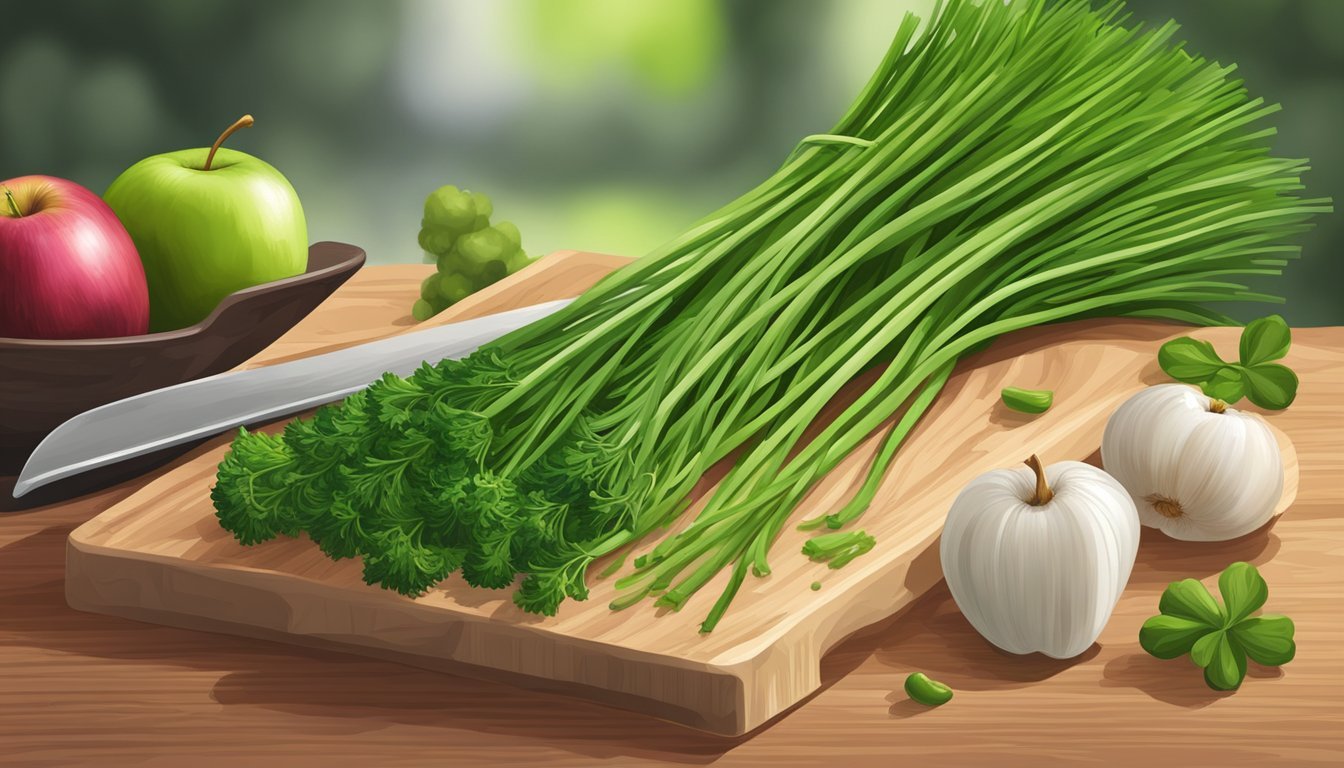Top Foods Rich in Kaempferol
Top Natural Sources for Better Health
Exploring foods high in kaempferol offers valuable insights into how everyday dietary choices can contribute to improved health. This powerful plant compound, found in a variety of fruits and vegetables, is celebrated for its anti-inflammatory and antioxidant properties. Adding kaempferol-rich foods to your diet can play a significant role in supporting cardiovascular health and reducing the risk of certain chronic diseases.
Understanding the sources and benefits of kaempferol can help individuals make informed decisions about their nutritional intake. By incorporating a diverse range of kaempferol-rich foods, people can take proactive steps towards enhancing their overall well-being.
1) Kale
Kale is a leafy green vegetable renowned for its high nutrient content, including a significant amount of kaempferol. This flavonoid is known for its anti-inflammatory and antioxidative properties.
Studies suggest that kaempferol in kale may help reduce inflammation and lower blood pressure. This can contribute to improved cardiovascular health.
Besides kaempferol, kale is also rich in vitamins A, C, and K. It is a versatile vegetable that can be added to salads, smoothies, and cooked dishes.
Regular consumption of kale can be a delicious way to incorporate more kaempferol and other nutrients into your diet.
2) Spinach
Spinach stands out as one of the most efficient sources of kaempferol. A serving size of one and a half cups of raw spinach contains about 28 mg of this potent flavonoid.
This leafy green is not just rich in kaempferol; it's also packed with other vital nutrients, including vitamins A, C, and K.
Kaempferol in spinach offers anti-inflammatory benefits. This flavonoid can help reduce inflammation in the body, contributing to better overall health.
In addition to its anti-inflammatory properties, kaempferol is linked to a lower risk of chronic diseases. Consistent intake of kaempferol-rich foods like spinach may support heart health and improve longevity.
Eating spinach raw in salads or smoothies ensures you get the maximum amount of kaempferol. Cooking can reduce the levels of some nutrients, but spinach remains beneficial in both raw and cooked forms.
Incorporating spinach into a daily diet is a simple and effective way to boost kaempferol intake.
3) Broccoli
Broccoli is a notable source of kaempferol, a flavonoid with powerful antioxidant properties. This vegetable belongs to the cruciferous family, which is known for its health benefits.
Kaempferol concentration in broccoli has been linked to anti-inflammatory and anti-cancer effects. Including broccoli in a diet can contribute to overall health due to these compounds.
Broccoli's rich kaempferol content is best preserved when it's steamed lightly rather than overcooked. This maintains its nutritional profile and maximizes benefits.
4) Brussels sprouts
Brussels sprouts are a significant source of kaempferol, a powerful antioxidant.
This cruciferous vegetable not only provides kaempferol but also delivers fiber, vitamins, and minerals. These nutrients support overall health and well-being.
Kaempferol in Brussels sprouts helps protect cells from oxidative stress.
Studies suggest that diets high in kaempferol-rich foods like Brussels sprouts may help reduce the risk of certain cancers. These include colorectal, lung, esophageal, prostate, pancreatic, and melanoma.
Including Brussels sprouts in your diet is easy. They can be roasted, steamed, or sautéed, making them a versatile addition to many meals.
Regular consumption of Brussels sprouts contributes to a healthier diet and provides valuable kaempferol.
5) Green beans
Green beans are a great source of kaempferol, a flavonoid known for its wide range of health benefits. They are not only delicious but also packed with essential nutrients that support overall well-being.
Incorporating green beans into one's diet can contribute to cardiovascular health due to the anti-inflammatory properties of kaempferol. This compound helps reduce inflammation, which is crucial for maintaining healthy blood vessels and heart function.
Green beans offer more than just kaempferol. They are rich in vitamins A, C, and K, along with manganese and fiber. These nutrients work together to boost the immune system, support bone health, and improve digestive health.
Cooking green beans is simple and versatile. They can be steamed, sautéed, or even roasted, making it easy to add them to various dishes. Adding them to salads, soups, or stir-fries can enhance both flavor and nutritional value.
The antioxidants in green beans help combat oxidative stress, which may reduce the risk of chronic diseases. Including green beans in daily meals can be a tasty and health-promoting habit.
6) Leeks
Leeks are a significant source of kaempferol, a powerful flavonoid known for its antioxidant properties. They stand out not just for their flavor but also for their nutritional benefits.
Kaempferol in leeks may help reduce inflammation, providing critical support in reducing risks for chronic conditions such as heart disease. Antioxidants like kaempferol fight oxidative stress, which is linked to various health issues.
Leeks also contribute to heart health by protecting blood vessels. The presence of nitric oxide, produced as a result of kaempferol's activity, helps to maintain vascular health and function. Consuming leeks may offer protective benefits for the cardiovascular system.
In addition to kaempferol, leeks contain other valuable nutrients. They are rich in vitamins A, C, and K, which support overall health. Including leeks in a balanced diet can contribute to a well-rounded intake of essential nutrients.
7) Parsley
Parsley stands out as a significant source of kaempferol. This leafy herb, commonly used as a garnish, actually boasts high levels of this beneficial flavonoid.
Kaempferol is known for its anti-inflammatory and antioxidant properties. Including parsley in the diet can help leverage these potential health benefits.
In addition to kaempferol, parsley provides a range of other nutrients, including vitamins A, C, and K. These contribute to immunity, skin health, and proper blood clotting.
Fresh parsley can be easily added to salads, soups, and various dishes. Its versatility makes it an easy addition to many meals, enhancing both flavor and nutritional profile.
Parsley is readily available in most grocery stores and can be grown in home gardens. Regular consumption can be a simple way to increase kaempferol intake.
8) Chives
Chives are a potent source of kaempferol.
A quarter cup of chives provides roughly 1.5 mg of this beneficial flavonoid. Regular consumption of chives contributes to your intake of essential nutrients, including vitamin A, folate, vitamin K, and choline.
Adding chives to dishes not only enhances their flavor but also boosts their nutritional profile. They can be chopped and sprinkled on salads, soups, and omelets.
For those looking to increase kaempferol intake, chives are an easily accessible and versatile option. Their mild onion-like flavor makes them suitable for a wide range of recipes, making it simple to include them in everyday meals.
Incorporating chives into your diet can be a step toward better health, offering both taste and nutritional benefits.
9) Endive
Endive, a leafy green vegetable, is known for its high water content, low calorie count, and rich nutrient profile.
Specific antioxidants in endive, such as kaempferol, quercetin, and beta-carotene, contribute to its health benefits. These compounds help reduce inflammation and support cardiovascular health.
Endive's high fiber content aids digestion and helps in maintaining a healthy weight by promoting fullness.
Including endive in salads or as a cooked green is an excellent way to boost the intake of kaempferol and other nutrients.
10) Celery
Celery is a notable source of kaempferol, a type of flavonoid found in plants. This compound has been linked to several potential health benefits, including anti-inflammatory properties.
In addition to kaempferol, celery offers a rich array of nutrients such as vitamins A, C, and K. It also provides essential minerals like potassium and folate.
Celery is incredibly versatile in the kitchen. It can be consumed raw in salads, added to smoothies, or cooked in soups and stews. Its crisp texture and mild flavor make it a popular choice for many dishes.
For those looking to increase their intake of beneficial plant compounds, incorporating celery into the diet is a practical and tasty option.
Health Benefits of Kaempferol
Kaempferol is a potent flavonoid found in many fruits and vegetables. It offers several health benefits, including antioxidant properties, anti-inflammatory effects, and potential cancer prevention.
Antioxidant Properties
Kaempferol exhibits strong antioxidant activities, helping to neutralize free radicals in the body. Free radicals are unstable molecules that can cause cellular damage, leading to aging and various diseases.
This flavonoid helps reduce oxidative stress by donating electrons to free radicals, thereby stabilizing them. With its antioxidant capabilities, kaempferol contributes to the maintenance of healthy cells and prevention of oxidative damage. Regular consumption of kaempferol-rich foods such as kale, spinach, and broccoli can support the body’s defense against oxidative stress.
Anti-Inflammatory Effects
Kaempferol also shows notable anti-inflammatory properties. Inflammation is the body's natural response to injury or infection, but chronic inflammation can lead to health issues.
Studies indicate that kaempferol inhibits pro-inflammatory enzymes and cytokines, reducing inflammation effectively. By interfering with the signaling pathways that promote inflammation, kaempferol can help alleviate conditions such as arthritis, asthma, and inflammatory bowel disease. Including kaempferol sources like berries, tea, and apples in the diet can be beneficial for managing chronic inflammation.
Cancer Prevention Potential
Kaempferol has shown promise in cancer prevention. It operates through several mechanisms, including inducing apoptosis (programmed cell death) in cancer cells and inhibiting their proliferation.
Research suggests kaempferol can interfere with the growth of various cancer cell lines, such as those in breast, prostate, and colon cancer. By disrupting the life cycle of cancer cells, kaempferol can help prevent the spread and growth of tumors. Consuming foods rich in kaempferol, like tomatoes, grapes, and onions, might reduce the risk of certain cancers.
Absorption and Bioavailability
Understanding the absorption and bioavailability of kaempferol is key to evaluating its dietary benefits.
Kaempferol is a flavonoid found in many fruits and vegetables like onions, asparagus, and berries. However, its bioavailability can vary widely.
Bioavailability refers to the extent and rate at which the active compound is absorbed and becomes available at the site of biological activity. In the case of kaempferol, this is affected by its digestion, absorption, and metabolism.
Research indicates that kaempferol is not easily absorbed in its pure form. Glucoside conjugates found in certain plants, such as onions, show higher bioavailability. This makes certain foods more effective sources of kaempferol than others.
Despite its presence in various foods, there is a general lack of comprehensive data on dietary kaempferol bioavailability. Most studies focus on quercetin, another flavonoid with similar properties.
Nanotechnology offers promising solutions for kaempferol's poor bioavailability. Through encapsulation and other techniques, scientists are working on methods to improve its absorption and stability in the human body.
With ongoing research, understanding and improving the bioavailability of kaempferol will enhance its potential health benefits.
The limited data on human bioavailability poses challenges; more clinical studies are needed. Yet, integrating foods high in kaempferol, like onions and asparagus, remains beneficial.
Overall, kaempferol absorption and bioavailability are critical factors that determine its efficacy as a dietary supplement.
Nutritional Synergy
Kaempferol's benefits often shine brightest when it interacts with other nutrients. This synergy amplifies the positive effects on health.
Cruciferous vegetables like kale and broccoli contain high levels of kaempferol and vitamin C. These two nutrients work together to enhance antioxidant protection.
In fruits such as apples and grapes, kaempferol pairs with quercetin. This combination boosts anti-inflammatory benefits, supporting cardiovascular health.
Leafy greens like spinach and herbs such as dill combine kaempferol with folate, aiding in cellular functions and reducing oxidative stress.
Examples of Nutritional Pairs:
Kale: Kaempferol + Vitamin C
Spinach: Kaempferol + Folate
Apples: Kaempferol + Quercetin
Different cooking methods can also affect the bioavailability of kaempferol. Lightly steaming vegetables preserves kaempferol and its synergistic nutrients.
Cultivating a diet rich in varied sources ensures one maximizes the benefits of kaempferol's interactions with vitamins, minerals, and other antioxidants.











